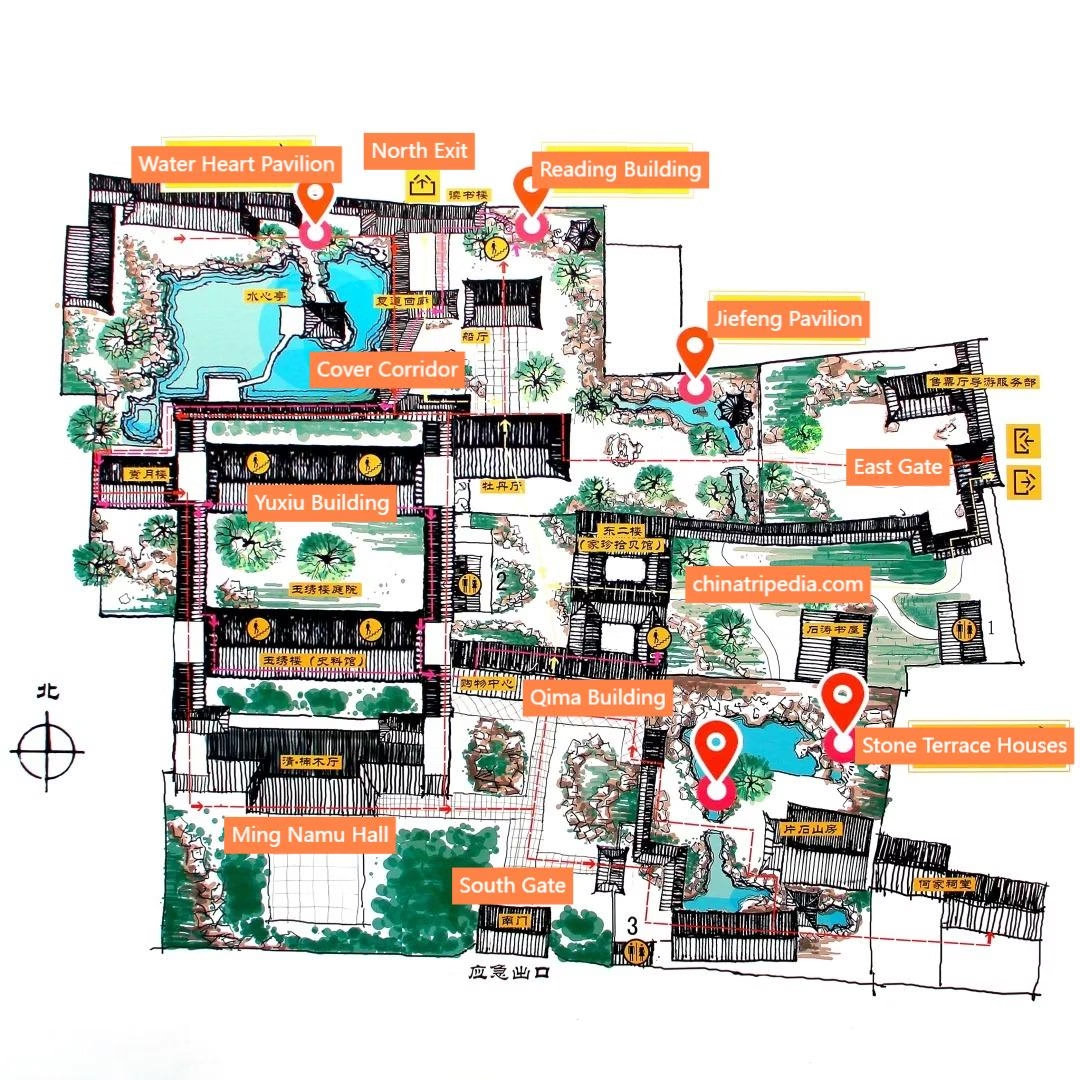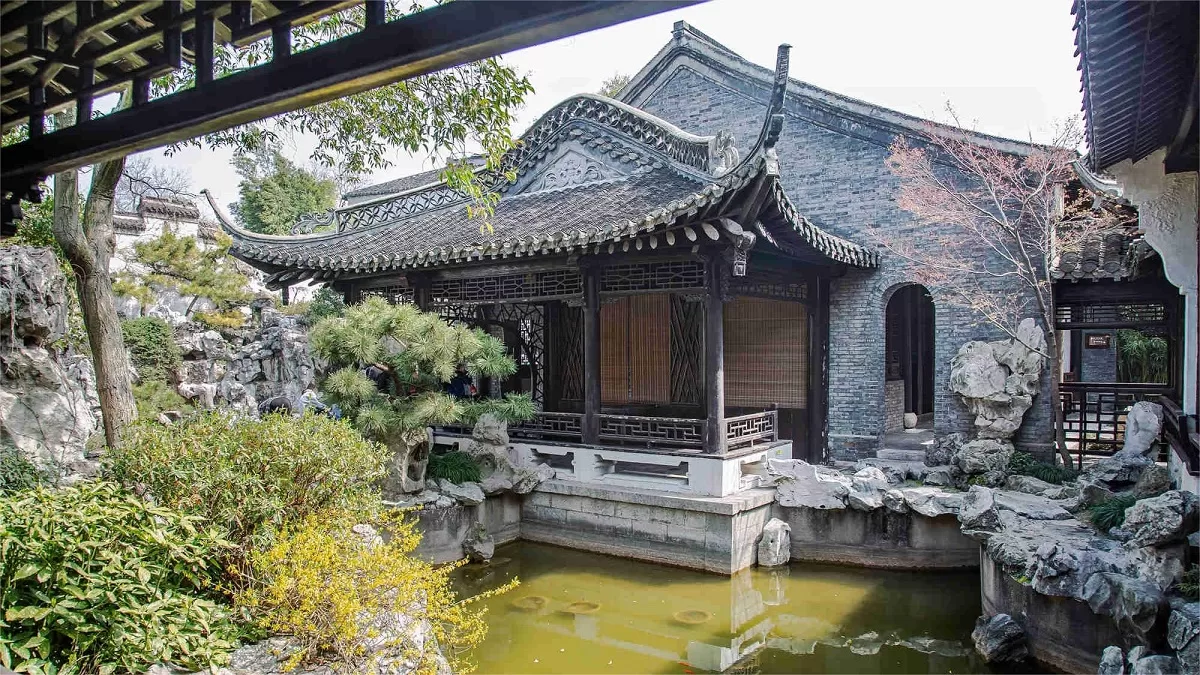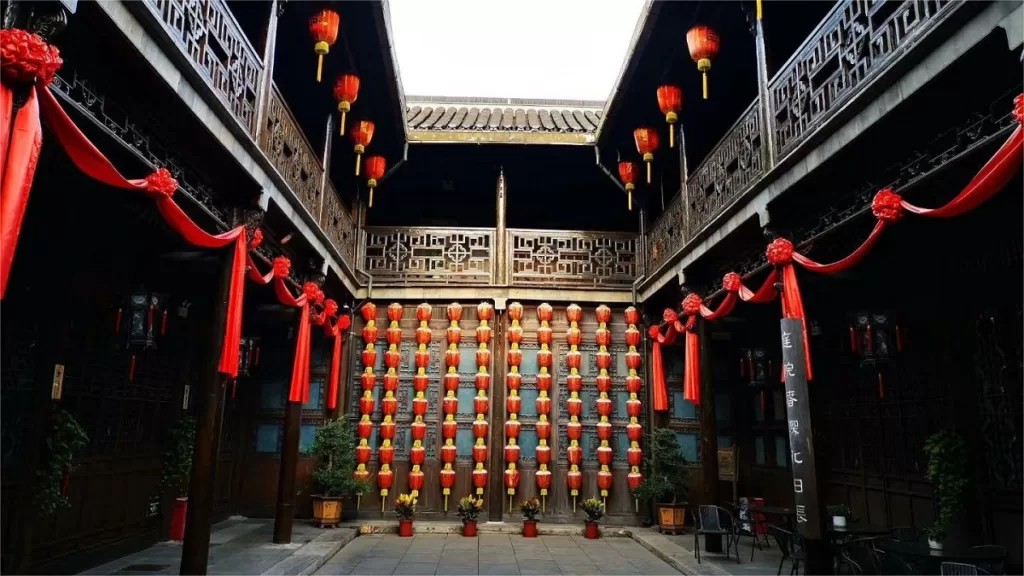Nestled in the heart of Yangzhou, China, Heyuan Garden (何园), also known as “Jixiao Mountain Villa (寄啸山庄),” stands as a testament to the exquisite artistry of Chinese classical garden design. It was constructed during the mid-Qing Dynasty and is often hailed as the “First Garden of Late Qing.” With a sprawling area of over 14,000 square meters and a built-up space spanning more than 7,000 square meters, Heyuan Garden is a masterpiece of tranquility and aesthetics. It was the brainchild of He Zhichao during the reign of Emperor Guangxu, and the mountain and rock formations within the garden were the handiwork of the masterful Shi Tao.
Heyuan Garden has played host to numerous illustrious figures throughout history. Renowned Chinese painter Huang Binhong resided in the garden during six visits to Yangzhou, taking up residence in the first floor of the east wing of the Qima Building. The esteemed writer Zhu Qianhua also called Heyuan Garden home for over five years, with his former residence located in the second floor of the east wing of the Qima Building.
Designated as a nationally protected cultural relic, Heyuan Garden is also a AAAA-level tourist attraction and one of the first 20 key public parks in China.
Table of Contents
- Basic Information
- Location and Transportation
- Map of Heyuan Garden
- Highlights of Heyuan Garden
- Vlog about Heyuan Garden
- A Brief History of Heyuan Garden
- Useful Tips Summarized from Reviews
- Attractions near Heyuan Garden
Basic Information
| Estimated Length of Tour | 2 hours |
| Ticket Price | 45 RMB (1st March – 31st Mary and 1st September – 30th November) 30 RMB (1st December – 28th February and 1st June – 31st August) |
| Opening Hours | 7.30 – 17.30; Last admission: 17.00 |
| Telephone Number | 0086-0514-87239626 |
Location and Transportation
Heyuan Garden is situated in the eastern part of Yangzhou, a picturesque city in Jiangsu Province, China. Specifically, you can find Heyuan Garden at 66 Xuningmen Street, in the Guangling District.
To get there, you can take the Sightseeing Bus and get off at Heyuan Garden Stop (何园站). Alternatively, you can also take bus 8, 19, 66, or 126, get off at Kangshan Cultural Park Stop (康山文化园站), and walk about 400 meters to the north to reach the garden.
Map of Heyuan Garden

Highlights of Heyuan Garden
Pianshi Shanfang (Stone Terrace Houses)

Adjacent to Heyuan Garden, you’ll find the Pianshi Shanfang, a rare gem in the world of garden architecture. It was created by the renowned Shi Tao, a master of stone artistry, during the late Ming and early Qing dynasties. Within the stone terrace houses, there is a stone chamber hidden within a mountain, which was meticulously restored in 1989.
Ming Nanmu Ting (Ming Nanmu Hall)

East of the Pianshi Shanfang, you’ll discover the Ming Nanmu Hall, one of the oldest structures within Heyuan Garden, boasting over 300 years of history. The hall’s western side features a “Boating Unmoored” area, where you can sit on a boat-like structure overlooking the fish pond. This symbolizes a smooth and uneventful journey through life.
Covered Corridors

One of the most remarkable features of Heyuan Garden is its extensive covered corridors. Spanning 1500 meters, these double-deck covered walkways are a rare sight in Chinese garden architecture. They seamlessly connect the East and West gardens, as well as the residential courtyards, creating a multi-dimensional and all-weather exploration space. These corridors not only showcase the beauty of circular design and versatility in Chinese garden art but also serve as a precursor to modern elevated crossroads.
Yuxiu Building

The Yuxiu Building stands as the centerpiece of Heyuan Garden. It comprises two brick and wood, two-story structures. These buildings skillfully blend traditional Chinese architectural concepts with Western influences, incorporating elements like French-style louvered windows, Japanese sliding doors, French fireplaces, and wrought iron beds, creating a unique and charming atmosphere.
Shui Zhong Yue (Moon in Water)

Shui Zhong Yue is a captivating feature found amidst the rocky landscapes in Pianshi Shanfang. During the day, the pool reflects a vivid moon, and its shape changes as you move around it, creating the illusion of waxing and waning. This intriguing sight is resulted from a gap in the stone wall, which is concealed by the arrangement of rocks from certain angles.
Qima Building

To the east of the Yuxiu Building and along the covered corridor, you’ll encounter the Qima Lou, or Qima Building. This is Heyuan Garden’s guest accommodation area, characterized by its saddle-like shape. It consists of two sections: the East Wing and the West Wing. These three-story buildings offer a seamless connection between floors and sections, providing a harmonious living space.
Water Heart Pavilion

Located at the center of the western garden, surrounded by a serene pool, the Shuixin Ting is a one-of-a-kind water pavilion. It is the only floating theater of its kind in China, designed for the garden’s owner to enjoy performances, operas, dances, and the scenic beauty while staying cool during the summer. The Water Heart Pavilion has been featured in over a hundred film and television productions, including classics like “Dream of the Red Chamber,” “My Fair Princess,” and “Bi Sheng.”
Vlog about Heyuan Garden
A Brief History of Heyuan Garden
Heyuan Garden was built in 1862 during the Tongzhi reign of the Qing Dynasty. It was originally the site of Shuanghuai Garden, which dated back to the Qianlong era. The garden was first named Jixiao Mountain Villa (寄啸山庄/Letting Out Whistle Mountain Villa), inspired by Tao Yuanming’s poem Return Home – “Leaning by the southern window to find serenity, climbing the eastern hill to let out a long whistle.”
In 1883, He Zhitao, a former official of the Jianghan Customs and the Hubei-Huangzhou Circuit, retired to Yangzhou. He purchased the site of Wu’s Pianshi Shanfang and expanded it into a grand garden, completing the construction over 13 years.
During the Second Sino-Japanese War in 1937, Japanese forces occupied large parts of China, including Yangzhou. Heyuan was used as a station for wounded soldiers.
In 1988, Heyuan and Ge Garden were designated as National Key Cultural Heritage Sites by the State Council. A year later, Pianshi Shanfang was restored. In 2005, Luo Zhewen, a renowned garden expert and president of the Chinese Society of Cultural Relics, praised Heyuan as “the finest private garden of the late Qing Dynasty.”
Useful Tips Summarized from Reviews
Choose Off-Peak Days: To enhance your experience, it is advisable to avoid weekends and holidays. Some visitors noted that Saturdays and Sundays can be crowded.
Seasonal Highlights: Heyuan Garden is most renowned for its blooming March magnolias (though the flowering period is short). Another recommended time to visit is in late November when the chicken claw maple trees are also in full display.
Choosing Between Heyuan and Ge Garden: If you have to choose only one, some suggest opting for Ge Garden. The rationale is that Heyuan Garden is relatively small, and its internal layout might seem disorderly due to historical factors such as the transitions in ownership and the turbulent times of the late Qing dynasty.
Explore the Surrounding Area: After touring Heyuan Garden, head north for a few hundred meters to reach Pishi Street. This street combines elements of literary and artistic life with the original lifestyle of old Yangzhou. Explore the visually appealing shaved ice shops, bookstores, cultural and creative shops, and flower shops along the street. If the main street feels too commercial, wander into one of the alleys to experience everyday life in Yangzhou.
Transportation Tips: It is suggested not to drive to Heyuan Garden. Instead, consider taking a taxi for convenient transportation. Taxis within Yangzhou are readily available and reasonably priced, with an initial fare of 8 yuan for the first 3 kilometers and an additional 2 yuan per kilometer beyond that.






The He Garden, known alongside the Summer Palace as one of China’s four famous gardens, certainly lives up to its reputation. The architecture of the garden, which blends Chinese and Western styles, perfectly reflects the unique aesthetic developed by the owner, Mr. He, during his interactions with Western culture.
He Garden is beautiful, small yet exquisite. Every step reveals a new scene, and even a small corner is stunning. However, there were too many people, making it impossible to take photos of the flower windows without anyone in them.
We arrived at the park around ten o’clock, and it was extremely crowded. No wonder it’s the hottest spot in Yangzhou lately – absolutely stunning!
He Garden was really crowded! The narrow corridors and stairs were filled with people! The garden itself is beautiful, but the crowd really affected the experience. I spent less than an hour and a half there. The most memorable part was the restrooms; the faucets were high-end, and they even had heating!